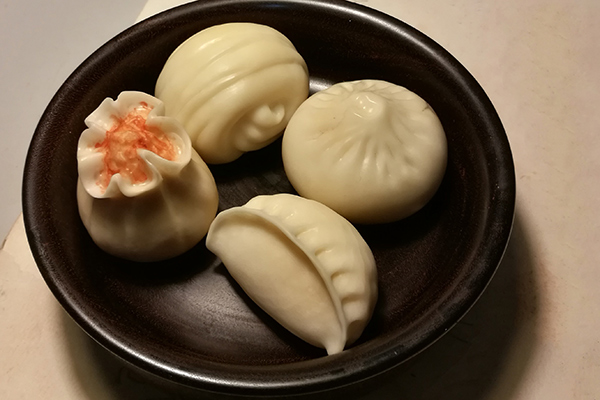
[Photo provided to China Daily]
Although inedible, the mementos serve a practical purpose and retain a certain cultural value. Apart from serving as home ornaments, these sculptures are used in Chinese tea culture as chachong, or "tea pets", a practice said to have originated in Jiangsu province and dates back to the Yuan Dynasty (1271-1368).
As the name implies, tea pets are statuettes placed on tea trays to add spice to the tasting experience. Soaked in tea every day, the statuettes take on a natural patina and become smoother and more vivid through daily use, Zhou says.
For the material, Zhou chooses Chinese boxwood and tagua nuts, both of which are economical and easy to find. "Boxwood is used commonly throughout the Yangtze River basin. Its consistent quality makes it ideal for mass production. Tagua nuts, while having a color resembling that of steamed buns, are better suited to meticulous hand carving," Zhou says.
Apart from these Yangzhou breakfast items, Zhou also makes a variety of lifelike fruits, seeds and nuts-including red dates, chestnuts, peanuts and melon seeds-from different kinds of wood that can easily fool the eye.
"When my friends visit me at my studio, they sometimes pick up a wooden melon seed and try to crack it open. It still amuses me and makes me proud when they do that," Zhou says.
Zhou is not a full-time artisan. He specializes in classical garden design and only started carving wood as a hobby in 2012 at the age of 39.
"Working in traditional Chinese gardens, I am exposed daily to antique furniture, wooden structures and woodcarving patterns," Zhou says. "I used to be an art teacher, so I thought I would give woodcarving a try."